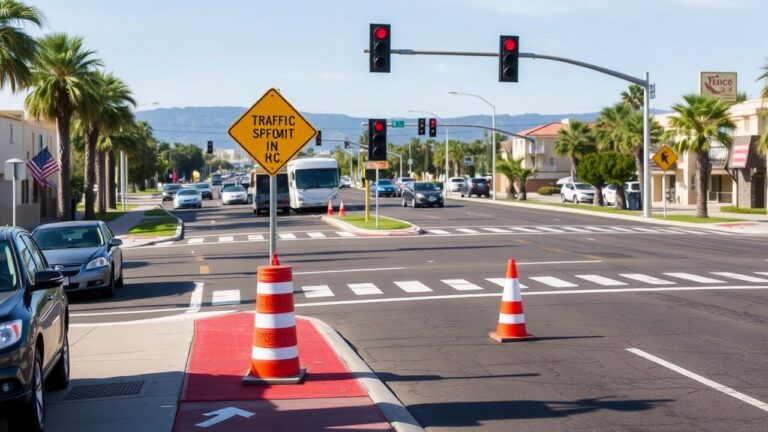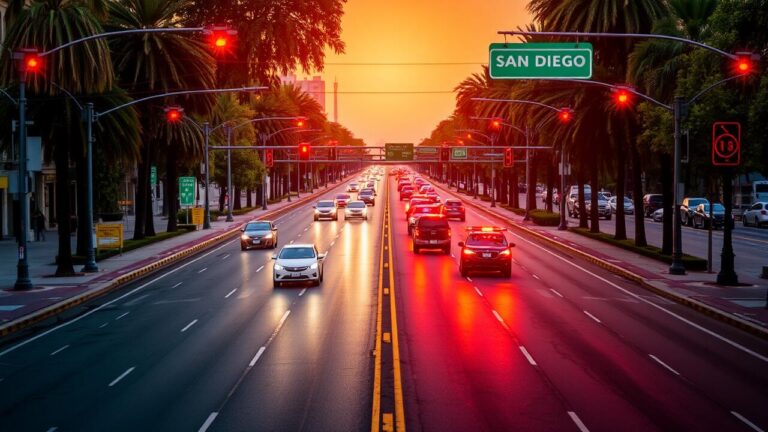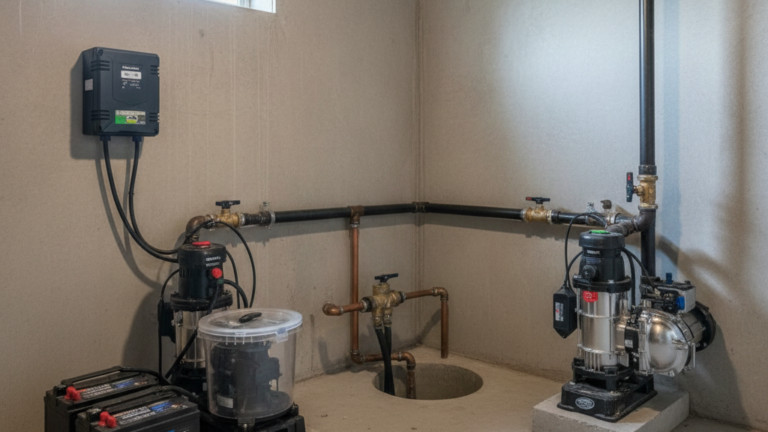San Diego Political News
Influence of Political Parties in San Diego
In the vibrant tapestry of San Diego’s political realm, parties wield considerable power, sculpting the discourse surrounding pivotal issues and steering policy initiatives with deft precision. The Democratic and Republican juggernauts reign supreme in this arena; however, a burgeoning wave of third parties and independent candidates is making its mark. These fresh contenders infuse the conversation with an eclectic mix of viewpoints, enriching local elections and invigorating civic participation. Their emergence has ignited fervent debates about representation—a clarion call for a broader spectrum of perspectives within city governance.
Yet, the interplay among these factions is not static; it’s a fluid dance where alliances coalesce around pressing topics like housing affordability and environmental sustainability. While San Diego often mirrors national political currents, it remains distinctly shaped by its own demographic mosaic and economic realities. The sway of political parties permeates every facet—from campaign strategies to voter mobilization maneuvers—ultimately crafting public perception on crucial policy issues. This intricate web among the parties holds immense significance as it charts the course for future local governance and civic aspirations.
Current Party Dynamics and Alliances
The political scene in San Diego is a swirling tapestry, constantly reshaping itself under the weight of shifting demographics and rising social issues. The Democratic Party has been flexing its muscles in recent elections, harnessing the energy of urban hubs while rallying younger voters to their cause. On the flip side, the Republican Party continues to wield considerable influence in suburban territories, championing causes like property rights and public safety with fervor. This dichotomy has birthed a fascinating interplay of cooperation and conflict between the two parties, intricately weaving their strategies for future electoral battles.
Amidst this backdrop, unexpected alliances are sprouting between certain factions within each party—often ignited by specific policy passions such as housing affordability and climate action. In city councils across San Diego, we’re witnessing moments of bipartisan camaraderie as members recognize that tackling urgent local issues requires unity over division. Activist groups—echoes of a substantial slice of the electorate—are also stepping into this arena, nudging party conversations into new territory where long-held lines blur in pursuit of pragmatic solutions that resonate with real-world needs.
| Party | Recent Strategy | Key Issues | Notable Alliances |
|---|---|---|---|
| Democratic Party | Mobilizing urban voters | Housing affordability, climate action | Collaboration with local activist groups |
| Republican Party | Strengthening support in suburbs | Property rights, public safety | Partnerships on joint public safety initiatives |
| Independent Activists | Influencing party agendas | Social justice, community engagement | Aligning with both parties on housing policies |
| Bipartisan Coalitions | Joint policy development | Infrastructure improvement, environmental sustainability | Formation of local task forces |
Local Government and Policy Changes
In the bustling realm of San Diego’s local government, a seismic shift is underway, as elected officials grapple with the relentless tides of changing social dynamics and economic hurdles. Issues like affordable housing and climate change loom large on the horizon, propelling leaders to thrust comprehensive policy reform into the spotlight. The city council has rolled out initiatives aimed at not only boosting housing supply but also amplifying sustainability efforts—policies that echo a larger commitment to meet community needs while navigating state-level mandates.
Yet, amid these transformations, community engagement stands as a cornerstone in crafting policy—a vital thread woven through public forums and outreach initiatives where residents are given a platform to articulate their concerns and aspirations. Local government entities have begun to weave constituents’ feedback into the very fabric of decision-making processes, ensuring that policies resonate deeply within the populace’s heartbeats. This fervent focus on transparency and accountability doesn’t merely serve bureaucratic functions; it acts as a catalyst for strengthening public trust and nurturing an atmosphere ripe for collaboration between officials and citizens alike.
Recent Developments in Governance
A whirlwind of transformation is sweeping through the governance landscape of San Diego, a kaleidoscope reflecting the shifting priorities of its leadership. Recent policy initiatives are diving headfirst into the pressing issues of housing shortages and environmental sustainability—no small feat in a city that’s constantly evolving! The city has funneled significant resources into affordable housing projects, casting a spotlight on those underutilized pockets just waiting to be revitalized. Meanwhile, green infrastructure isn’t merely an afterthought; it’s now intricately woven into urban planning strategies, ensuring that as the city grows, so too does its commitment to preserving our planet.
But wait—there’s more! Community engagement has burst forth as a pivotal player in this local governance drama. Town hall meetings and workshops are buzzing with participation like never before; residents are clamoring for their voices to resonate louder in decision-making arenas. This wave of civic enthusiasm is compelling local officials to adopt practices steeped in transparency—a refreshing shift indeed! As feedback from constituents emerges as a powerful catalyst for change, collaboration between city officials and community members aims not just at responsive governance but at fostering responsibility that echoes throughout San Diego’s vibrant neighborhoods.
The Role of Activism in San Diego Politics
In the vibrant tapestry of San Diego’s political scene, activism has surged forth as a formidable force, intricately weaving itself into the fabric of discourse and policy-making. Grassroots movements—those passionate rallies of residents—have ignited engagement on pressing issues like housing affordability, environmental stewardship, and social justice. This eclectic community of activists doesn’t just act in isolation; instead, they join hands with local organizations to forge powerful coalitions that amplify their collective voice—a symphony against the backdrop of indifference.
These partnerships are more than mere alliances; they create waves that enhance visibility while nurturing a deep sense of shared responsibility among citizens. It’s an invitation for everyone to step up and partake in the ever-evolving political process.
Take note: recent campaigns have painted a vivid picture of how this brand of activism can sway local governance. Elected officials now find themselves confronted by constituents’ demands in ways that feel refreshingly direct and urgent. Thanks to savvy maneuvering across social media platforms and adept community organizing, these movements have become lightning rods for support—and action springs forth quickly!
What we’re witnessing is not just change; it’s an exhilarating shift towards inclusivity within San Diego politics. The voices and visions from diverse populations are no longer whispers but resonant calls being recognized and prioritized at last. As the dialogue between activists and policymakers unfolds like an intricate dance, it’s clear this dynamic will continue to reshape our political landscape—casting shadows on what future developments may come in this bustling region brimming with potential.
Grassroots Movements and Their Impact
In the vibrant tapestry of San Diego’s political scene, grassroots movements are weaving intricate patterns that challenge the status quo. They spring forth like wildflowers from cracks in the pavement, spotlighting pressing issues such as affordable housing, environmental justice, and immigration reform—real concerns that resonate deeply within the community’s heart. These movements don’t just appear out of thin air; they germinate in response to local grievances, rallying neighbors and friends alike to raise their voices for change.
Amid organized protests echoing through city streets and social media campaigns lighting up screens with fervor, activists harness a collective energy that transcends mere local chatter. Their passion reverberates far beyond neighborhood boundaries, drawing in those who might otherwise feel adrift from conventional political channels—a lifeline thrown into turbulent waters.
The ripple effect of these grassroots efforts is profound; they reach into the very fabric of larger political dialogues. Elected officials find themselves under scrutiny as constituents demand accountability—an urgent call to action that can no longer be ignored. When these initiatives thrive, they don’t just spark policy shifts; they illuminate pathways toward transparency in governance and ignite civic engagement among citizens who once felt marginalized.
By nurturing bonds of community and cooperation amidst specific struggles, these movements do more than tackle challenges—they cultivate empowerment among individuals. Each voice added to the chorus transforms apathy into activism, shaping not only individual destinies but also charting a course for San Diego’s future governance where every citizen has a stake at the table.
San Diego’s Relationship with State Government
The dance between San Diego’s local government and the state apparatus is nothing short of pivotal, intricately weaving the fabric of policy that envelops the region. Through a kaleidoscope of collaborative initiatives, particularly in vital realms like infrastructure, housing, and environmental stewardship, a symphony of efforts has emerged. State legislators often zoom in on issues that resonate deeply with San Diego’s distinct tapestry—its challenges interlaced with its golden opportunities. These alliances are not just strategic; they’re lifelines for securing essential funding and resources to fuel local ambitions.
Yet, amid this cooperative choreography, friction occasionally simmers to the surface as divergent priorities clash like titans. Local leaders might champion tailored policies that echo their constituents’ voices—a stark contrast to wider state agendas which can feel almost monolithic. This tug-of-war fosters a landscape ripe for negotiation and recalibration as both levels of governance strive to harmonize their ambitions while bolstering the well-being of San Diego’s populace. Thus unfolds an ongoing saga where cooperation intertwines with conflict—a dynamic pulse shaping the intricate relationship between local officials and state authorities.
Collaborative Efforts and Tensions
In the sun-drenched realm of San Diego, where surf meets cityscape, local government dances a delicate waltz with state authorities—grappling with the weighty concerns of housing shortages, public safety dilemmas, and the ever-pressing need for environmental stewardship. This intricate partnership is like a double-edged sword; it brings forth a torrent of resources and strategic initiatives that can sparkle with promise for the community. Look no further than recent endeavors aimed at fostering affordable housing and championing sustainability—shining examples illuminating what’s possible when local and state officials converge around shared aspirations.
Yet, lurking beneath this collaborative façade are simmering tensions that twist through the dialogue like an unexpected plot twist in a suspense novel. The clash of differing priorities and political agendas often ignites conflict over funding battles or state mandates crashing into San Diego’s distinct needs—a veritable storm brewing on the horizon. These disparities cast long shadows over effective policymaking, transforming harmonious governance into a complex puzzle riddled with obstacles. Public frustration mounts as citizens watch their leaders navigate these turbulent waters under heightened scrutiny, revealing just how challenging it can be to forge unity amidst diverging visions.
- The role of community input in shaping collaborative efforts between local and state governments.
- The impact of conflicting political agendas on policy implementation.
- Strategies for improving communication and understanding between different levels of government.
- Examples of successful partnerships that have effectively addressed housing and environmental issues.
- The importance of transparency in the decision-making process to alleviate public frustration.
- Ways to align local and state priorities to foster more effective collaborations.
- The potential for innovative solutions that emerge from addressing tension and conflict.
Future Political Trends in San Diego
As San Diego weaves through the intricate tapestry of political engagement, a kaleidoscope of trends begins to unfurl, each thread potentially altering the fabric of governance in this vibrant region. The unmistakable rise of younger voters—an energetic force demanding attention—compels politicians to tackle pressing issues with newfound urgency: climate change looms large, housing affordability remains a persistent concern, and social justice cries out for recognition. This demographic metamorphosis hints at a seismic shift in priorities; sustainability and inclusivity are no longer mere buzzwords but central tenets in the realm of policy-making.
Yet, as technology gallops forward at breakneck speed, an ever-growing dependence on digital platforms for campaigning and civic engagement seems inevitable—a double-edged sword that could redefine how voices are amplified or drowned out.
In this whirlwind of change, one cannot ignore the echoing polarization rippling across the nation—it inevitably seeps into local dynamics. The sharp divisions may ignite organized grassroots movements like wildfire, igniting fervent calls for accountability and reform from all corners of government. Local coalitions bloom amid both progressive aspirations and conservative values, fostering an invigorated dialogue around critical issues that matter most to residents. This landscape brims with activism—a reflection of a citizenry not just willing but eager to roll up their sleeves and reshape policies while taking aim at long-standing norms.
Navigating these turbulent waters will hinge upon engaging communities in genuine conversations—conversations that allow San Diego to adapt nimbly to these unfolding political realities while empowering its diverse populace along the way.
Predictions and Emerging Issues
As San Diego gears up for the forthcoming election cycle, a whirlwind of trends is poised to redefine its political terrain. The city’s vibrant demographic tapestry may usher in new voter priorities and an evolution of party loyalties that could leave many scratching their heads. Enter the younger electorate—those passionate champions of climate change and advocates for affordable housing—whose voices are likely to echo through campaign platforms, urging both major parties to reimagine their agendas with fresh vigor.
But wait! What about those local issues bubbling beneath the surface? Housing affordability looms large as a daunting challenge, shadowed closely by concerns over public safety and environmental sustainability. This intricate dance among competing priorities might just nudge candidates toward more holistic strategies, tackling multiple crises in one fell swoop. Meanwhile, as grassroots activism surges in response to these pressing matters, we find ourselves at a fascinating intersection: will established political powers adapt or resist? The tug-of-war between grassroots movements and traditional entities promises an unpredictable landscape that could very well shape the outcome of future elections—a thrilling spectacle worth watching!
Conclusion
San Diego’s political landscape is a swirling tapestry of party dynamics, local governance, and the fervent pulse of activist influence—an intricate dance that’s perpetually evolving. The tangled web woven by political factions and their interactions with grassroots movements crafts not just policy outcomes but also stirs community reactions in unpredictable ways. These elements are pivotal for deciphering the shifting priorities and emerging challenges that this vibrant city grapples with.
As we peer into the murky waters of San Diego’s political future, one can sense imminent upheaval fueled by demographic shifts and socioeconomic pressures. The rising tide of younger voters stepping up to the plate, coupled with an escalating focus on environmental sustainability and social justice issues, hints at a potential realignment of long-standing alliances. Keeping an eye on these trends isn’t just wise; it’s essential for anticipating how strategies and policies may morph in this dynamic region.







